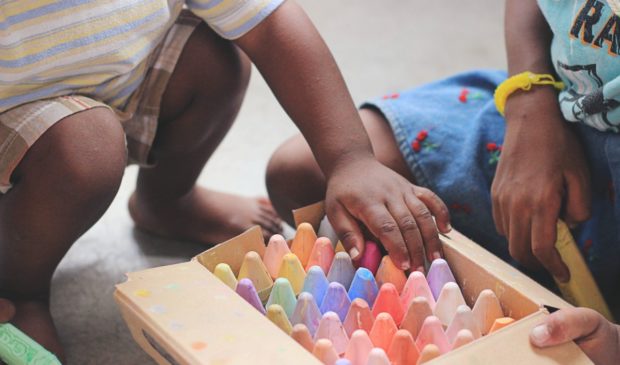-

Newsletter Signup
The Austin Monitor thanks its sponsors. Become one.
Most Popular Stories
- New federal cash paves way for East Austin’s ‘wishbone’ bridge over Lady Bird Lake
- Austin’s airport is getting a new concourse and 20 more gates but not until the 2030s
- Judge rules city can’t use taxpayer money for South Central TIRZ
- Democrats vs. Republicans: First election coming for Travis Central Appraisal District board
- Save Our Springs Alliance sues City Council over Open Meetings Act
-
Discover News By District

Afterschool programs struggle with staffing, funding challenges
Monday, November 1, 2021 by Eniola Longe
Post-pandemic life is not looking good for afterschool programs in Austin. Attendance numbers are down, and several afterschool programs are experiencing a persistent staffing shortage, with providers having to let go and even repurpose staff.
According to a survey from the Afterschool Alliance, providers across the country have concerns about staffing, funding and being able to provide services during the current school year.
“We had to lay off our entire staff during the pandemic in March 2020,” said Jennette Everett, the aftercare director at Austin Discovery School, a public charter school. “They were able to get their jobs back in October 2020, but some of them chose not to come back because they didn’t feel it was safe.”
Everett explained that last year when the school was offering virtual learning, “The afterschool program only had about 40 students enrolled, but this semester, we have over 120 enrolled.”
Sarah Rinner, the chief program officer for Creative Action, a nonprofit, arts-based youth development organization that provides afterschool care in Central Texas, said her organization “saw a decrease in attendance numbers during the pandemic, primarily because we run on pretty much 100 percent in-person programming.”
The organization currently serves about 600 students, a figure Rinner says is about 30 percent less than the numbers they see in a typical year.
“We did move online, but we did not retain the same number of students,” she continued. “We are back to in-person programs, but we also cannot offer as many activities as we normally do. We are currently rebuilding our part-time teaching artists. Our numbers are still down because we are still hiring staff.” Rinner said she had not encountered this sort of staffing challenge before.
Creative Action also serves as a vendor to other organizations and schools within the Austin and Del Valle ISDs on a contract basis. Under these contracts, the organization serves between 1,000 and 1,200 kids. “Those numbers are really down right now because we haven’t started some of those programs because of a lack of staff,” Rinner said.
Austin Parks and Recreation Department tells a different story. PARD offers afterschool programs at 16 recreation centers spread across north, south and central Austin for kids in kindergarten through sixth grade. The recreation centers currently have 359 kids enrolled in afterschool programs. Pre-pandemic enrollment stood at 612.
However, the lower numbers at the rec centers are not due to staffing issues.
“The current enrollment level is somewhat self-imposed as we have adjusted our maximum enrollment to comply with CDC and Austin Public Health capacity limitations for youth that are not vaccinated,” said Lucas Massie, parks department assistant director. “We do anticipate ramping back to normal enrollment levels after the FDA has approved a vaccine for youth ages 11 and under.”
AISD’s Prime Time program, which is funded by a grant from the city, is the biggest free afterschool program in Austin. Prime Time clubs are sponsored by teachers who receive a stipend for volunteering. During the 2020-21 school year 4,662 students were served, and in the year before the pandemic, Prime Time served 5,359 students.
Without afterschool programs to rely on during the pandemic, parents’ level of concern for their children’s social and emotional health remained high throughout 2020, according to the Afterschool Alliance. More than eight in 10 parents said they were concerned about their child’s social and emotional well-being.
Afterschool programs in Texas provide expanded learning opportunities to 749,595 students. The Alliance found that, for every child attending an afterschool program, three more would participate if a program were available.
Rinner and her team craft their afterschool programming to tackle social justice issues through art-making. “Returning to in-person programming has been really amazing,” she said. “Kids in our program are so excited to be back together, to be doing art. And for a lot of our parents, they are just grateful that there are programs their kids can go to because they are back at work.”
“Out-of-school time and the afterschool program is just this magical space where kids get to be themselves in a way they might not get to be during the school day, and that is why addressing both the funding and staffing issue must be top priority,” Rinner said.
This story was written by a journalism student at the University of Texas at Austin. The Austin Monitor is working in partnership with the UT School of Journalism to publish stories produced by students in the City and County Government Reporting course.
The Austin Monitor’s work is made possible by donations from the community. Though our reporting covers donors from time to time, we are careful to keep business and editorial efforts separate while maintaining transparency. A complete list of donors is available here, and our code of ethics is explained here.
You're a community leader
And we’re honored you look to us for serious, in-depth news. You know a strong community needs local and dedicated watchdog reporting. We’re here for you and that won’t change. Now will you take the powerful next step and support our nonprofit news organization?









